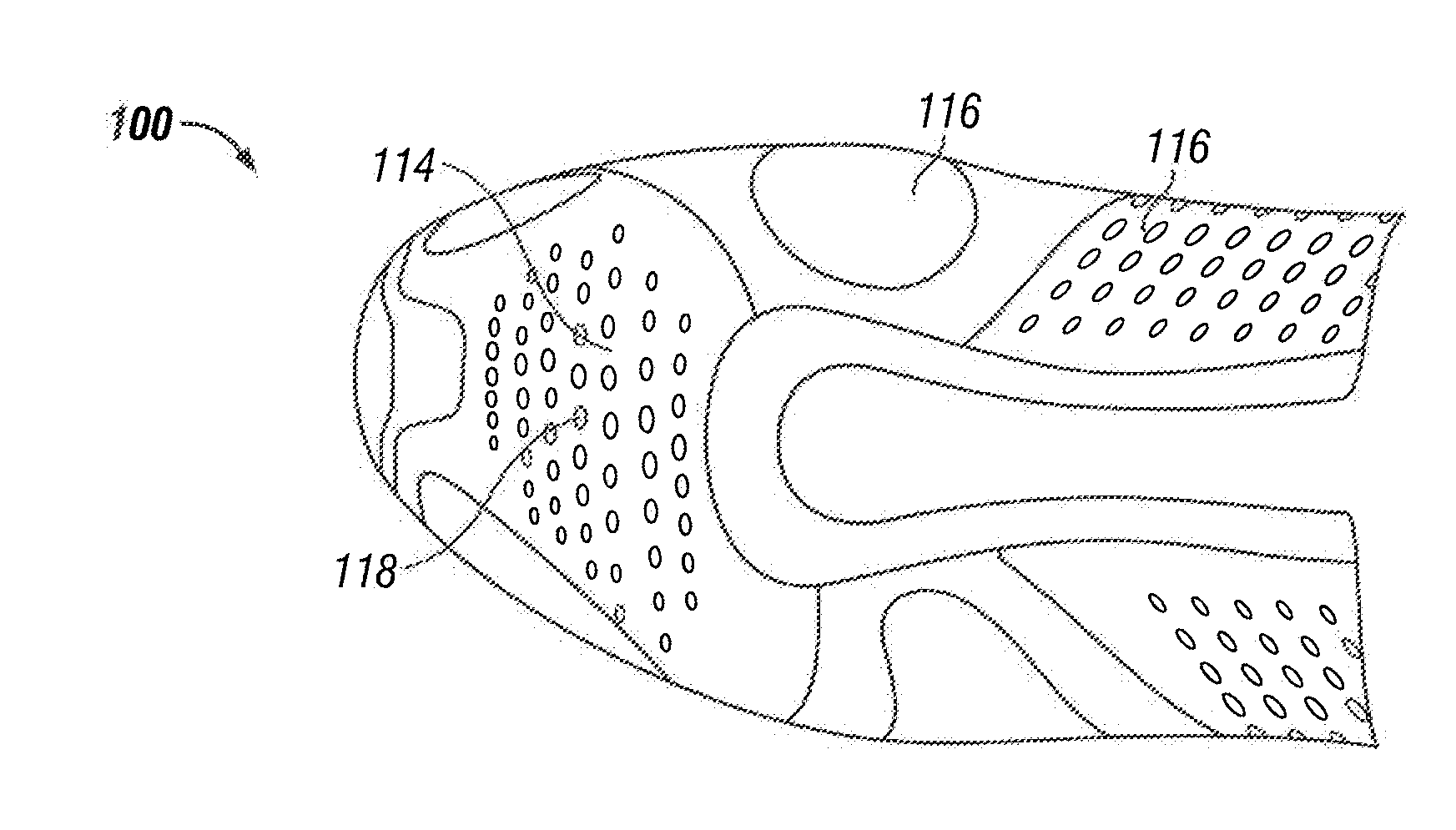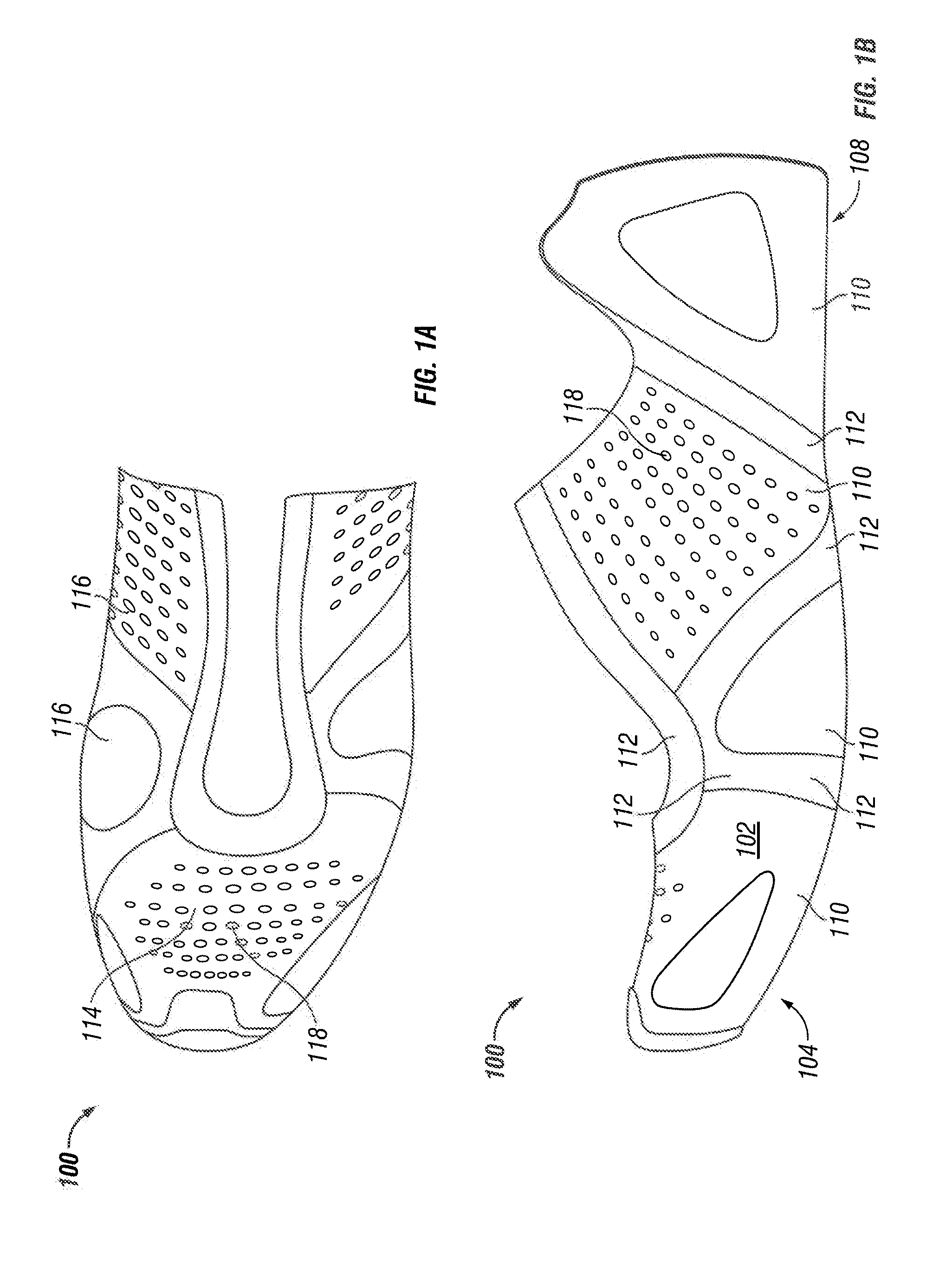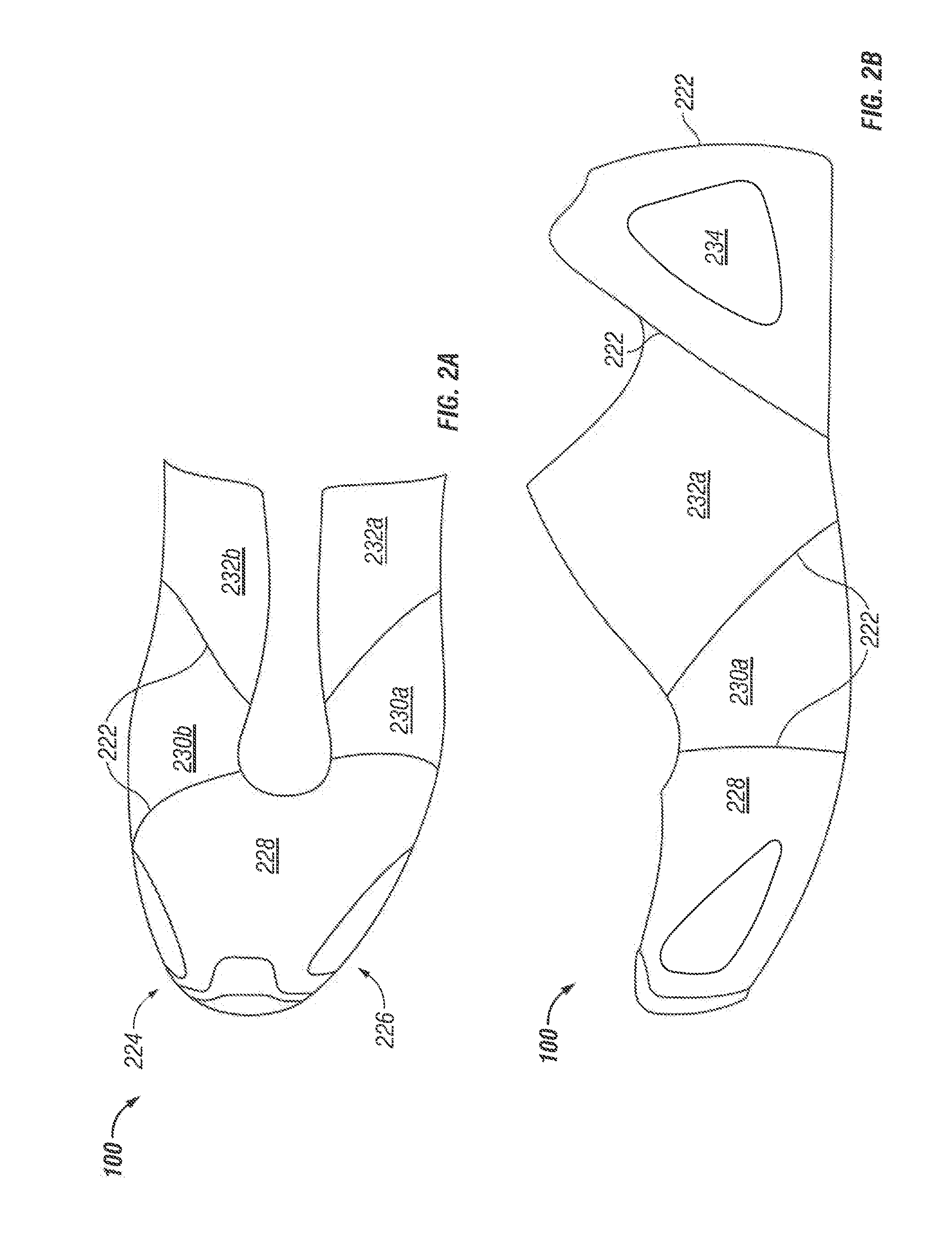Smooth Shoe Uppers And Methods For Producing Them
a technology of smooth uppers and uppers, applied in the field of shoe uppers, can solve the problems of excessive time-consuming, labor-intensive, expensive, etc., and achieve the effect of increasing and reducing the weight of the sho
- Summary
- Abstract
- Description
- Claims
- Application Information
AI Technical Summary
Benefits of technology
Problems solved by technology
Method used
Image
Examples
Embodiment Construction
[0028]The present invention is now described with reference to the figures where like reference numbers indicate identical or functionally similar elements. Also in the figures, the left most digit of each reference number corresponds to the figure in which the reference number is first used. While specific configurations and arrangements are discussed, it should be understood that this is done for illustrative purposes only. A person skilled in the relevant art will recognize that other configurations and arrangements can be used without departing form the spirit and scope of the invention.
[0029]As used herein, a close seam is formed by the joining of two contiguous exterior or interior upper panels using conventional or non-conventional methods. These close seams could comprise traditional stitching or may be formed by stitchless techniques, including, but not limited to, RF welding, ultrasonic welding and cementing. Alternatively, as described in greater detail below, close seams...
PUM
 Login to View More
Login to View More Abstract
Description
Claims
Application Information
 Login to View More
Login to View More - R&D
- Intellectual Property
- Life Sciences
- Materials
- Tech Scout
- Unparalleled Data Quality
- Higher Quality Content
- 60% Fewer Hallucinations
Browse by: Latest US Patents, China's latest patents, Technical Efficacy Thesaurus, Application Domain, Technology Topic, Popular Technical Reports.
© 2025 PatSnap. All rights reserved.Legal|Privacy policy|Modern Slavery Act Transparency Statement|Sitemap|About US| Contact US: help@patsnap.com



